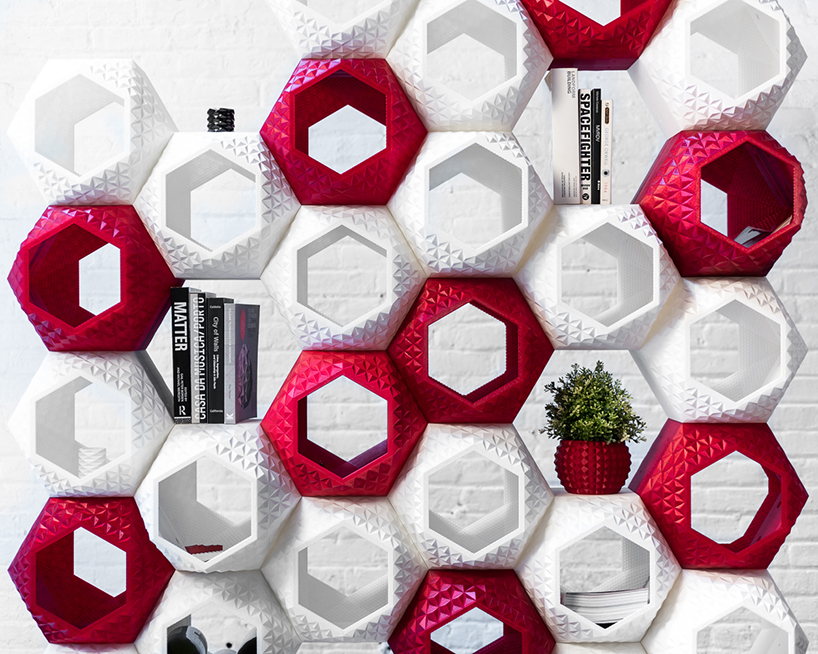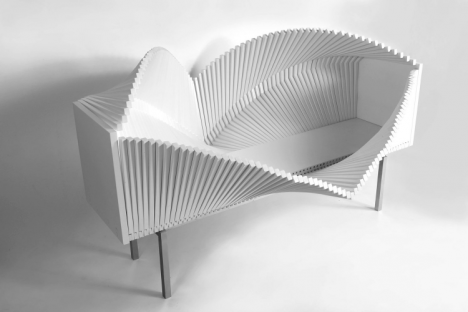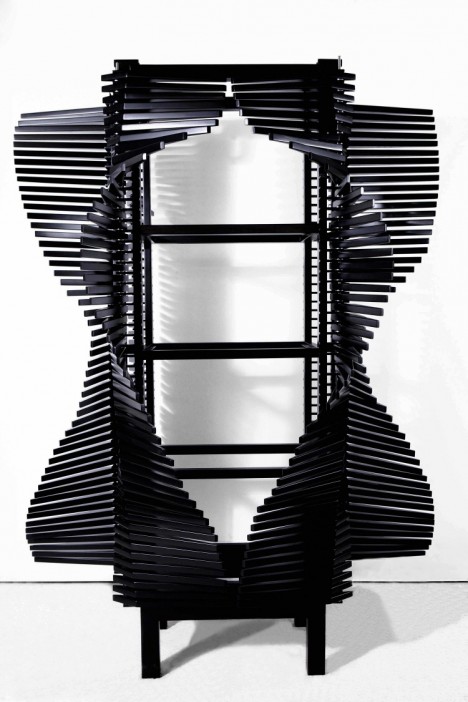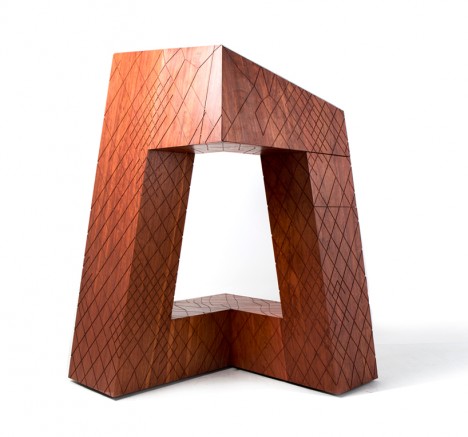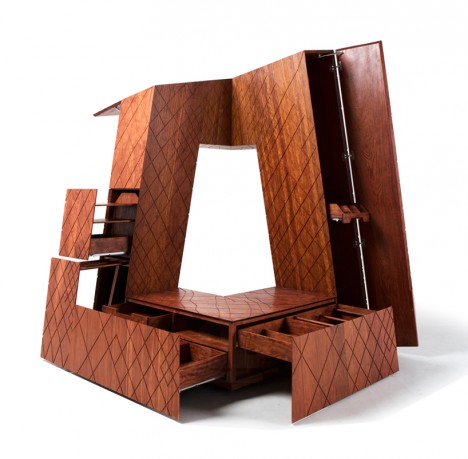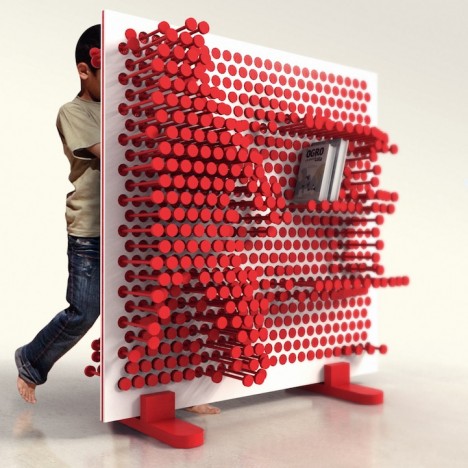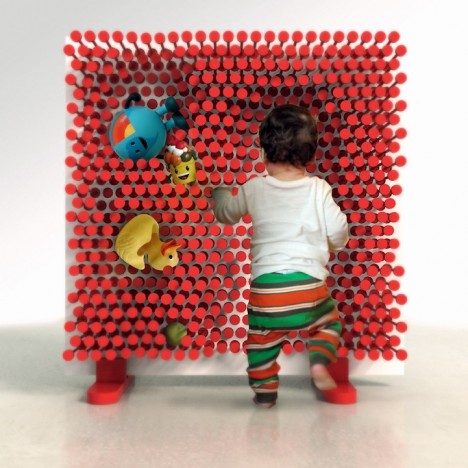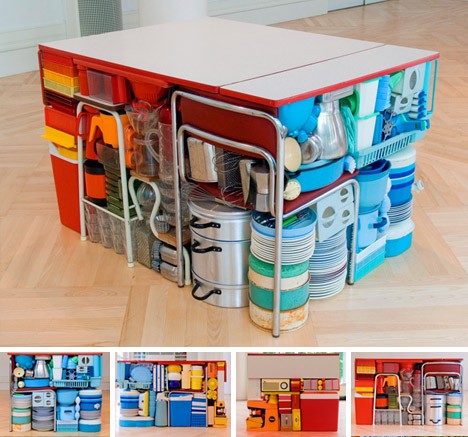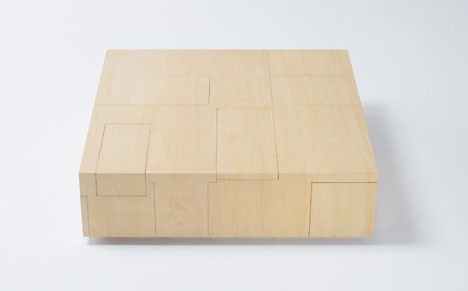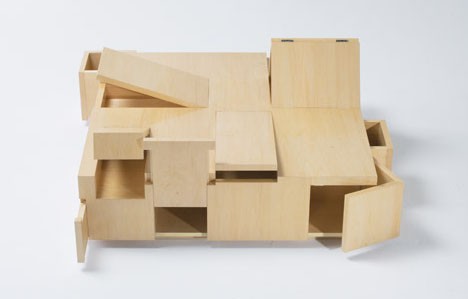Rejecting the idea that storage furniture needs to be hyper-functional above all, these innovative bookcases, credenzas, wardrobes, tables and shelves put the focus on unusual shapes and unexpected uses. These exceptionally well-designed storage solutions stand out, whether by hiding compartments in novel places, stacking modules in new ways or making a visual statement as sculpture.
Opening in Waves
Why should every item of storage furniture open via drawers and doors? ‘Wave’ by Sebastian Errazuriz turns the process of retrieving and replacing your stored items into a sort of artistic display with credenzas and armoires that open in entirely unexpected ways. “I don’t know where the line is between art and design,” he says. “It’s important to me that a project consist of just a little twist, because I ultimately want people to see the obvious, the everyday differently.”
Architecture As a Cabinet
OMA’s monumental CCTV headquarters building is recreated in furniture form by designer Nathan Li, turning it into a combination bench and storage case with cutouts in the wood mimicking the structure’s gridded glass facade.
Pin Press Storage
This pin press design by OOO My Design brings a childhood toy into full-scale as a functional item. Press the pins in any which way you want to create little pockets in custom sizes and shapes, perfectly fitting whatever objects you need to store.
Storage As a Perfectly Stacked Sculpture
Everyone who’s ever packed a moving truck as full as it can possibly get or jammed a bunch of stuff into a closet knows that the problem with this carefully Tetris’ed design lies in the fact that once you take something out, getting it back the way it was is near impossible. Still, it’s an impressive example of compressing a whole lot of stuff into the smallest possible space (and is actually a sculptural installation by Michael Johansson rather than a real storage cabinet.)
Table with Secret Storage
Virtually every compartment built into this wooden table by Naoki Hirakoso opens in a different way, so as you feel along the visible seams trying to open them, you’ll have to alternately push, pull, slide and lift. The seams produce abstract lines when the piece is fully closed.
